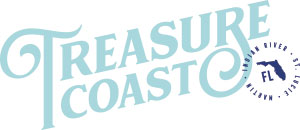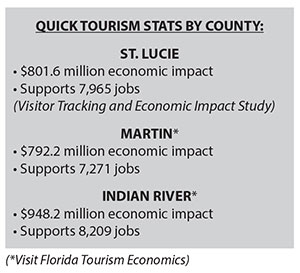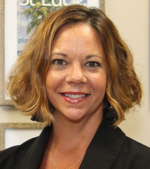 BY CHARLOTTE BIRELEY
BY CHARLOTTE BIRELEY
For decades, Treasure Coast locals and visitors alike have observed those hopeful individuals walking on stretches of our 65-mile coastline, equipped with their metal detectors and headphones, yearning for that joyous tone that indicates metal might be waiting for them under the surface. Out comes the sand sifter to see if centuries old gold, silver or other precious treasures might appear. And, it’s not unusual to see real treasure hunters just offshore aboard vessels aptly named Aarrr Booty or Sea Reaper when the seas are calm and the visibility is good. These hunters are in the water probing areas around 300-plus-year-old shipwrecks and limestone reefs, hoping to catch a glint of shimmer and uncover millions of dollars worth of treasure. After all, it’s happened before. Most people think these stories are for the movies, but here on the Treasure Coast, it’s real.
The story of the Treasure Coast began in 1715 when a fleet of Spanish ships — loaded with gold, silver, jewels and other treasures — was anchored just offshore about to make its way back to Spain. This was before the Weather Channel, so little did the explorers know a hurricane was headed right towards them. Most of the ships sank, scattering the treasure onto the ocean floor. To this day, these treasures are still found by lucky beachgoers or divers — giving the region its well-deserved name.
Fast forward to 2017 and 2018. Tourism is Florida’s number one industry, welcoming 126.1 million visitors that spent $112 billion supporting 1.4 million Florida jobs. Tourism keeps taxes low, saving every Florida household $1,549 a year in taxes. This influx of visitors and spending is likely what allows Florida to tout its “no state income tax” mantra. Tourism is the economic driver that creates the quality of life Florida residents deserve.
And here on the Treasure Coast, tourism contributes to the quality of life for local residents as well. It supports local businesses, and sales tax from visitor spending helps pay for local services such as public safety, schools, roads/bridges and environmental projects.
For years, the Treasure Coast tourism agencies have partnered together, leveraging their budgets and resources to promote the region in shared and/or emerging markets that would otherwise be unattainable. It made sense for the agencies not only to partner to extend their budgets, but also because the three counties have similar features, such as uncrowded beaches, acres of land conservation teeming with wildlife, vibrant arts and culture scenes, fantastic water activities ranging from boating to fishing to kayaking and a fascinating history that speaks to the coast’s unique name. It is all of this along with a laid-back, small town, old Florida atmosphere. It’s perfectly packaged, it just needed to be branded, funded and marketed to travelers that don’t know it exists.
TOURISM BRAND
 When the tourism leaders learned that Visit Florida, the state’s official destination marketing organization, could fund regional tourism programs, the Treasure Coast tourism offices didn’t hesitate to jump on the opportunity. “ I was listening to the chief marketing officer at a Visit Florida conference a year and a half ago,” says Nerissa Okiye, tourism manager for Martin County, “when the subject of regional tourism marketing came up. I instantly texted my St. Lucie and Indian River colleagues across the room and said, ‘Hey, we’re already doing this!’ But I knew we needed to do it more, so I literally emailed the CMO the next day.” That’s when the Treasure Coast tourism brand started into development.
When the tourism leaders learned that Visit Florida, the state’s official destination marketing organization, could fund regional tourism programs, the Treasure Coast tourism offices didn’t hesitate to jump on the opportunity. “ I was listening to the chief marketing officer at a Visit Florida conference a year and a half ago,” says Nerissa Okiye, tourism manager for Martin County, “when the subject of regional tourism marketing came up. I instantly texted my St. Lucie and Indian River colleagues across the room and said, ‘Hey, we’re already doing this!’ But I knew we needed to do it more, so I literally emailed the CMO the next day.” That’s when the Treasure Coast tourism brand started into development.
“The brand development process was an easy process for us,” states Allison McNeal, director of tourism for Indian River County. “The three of us have worked together for years, so we already had a vision of what we wanted and needed; we just didn’t have the resources or the funding to make it happen. Visit Florida did that for us, and today we have something we should all be proud of.”
Visit Florida played and continues to play a crucial role in the Treasure Coast’s tourism marketing efforts. After the brand and first campaign was finalized, the three agencies applied for and received a regional marketing grant from Visit Florida to launch its first campaign in the Atlanta market in May. Palm Beach International Airport, the region’s closest commercial airport offering daily non-stop flights from Atlanta, also joined in the campaign as the Treasure Coast’s official airline partner. The new campaign touts the Treasure Coast as a special and authentic Florida experience that’s a little off-the-beaten path.
The three Treasure Coast tourism offices are optimistic that this cohesive marketing approach will bring more exposure, visitors and economic impact to the area, especially in the low and shoulder season months when the local businesses need it most. “We recognize how valuable tourism is to our communities and to the quality of life of our residents,” says Charlotte Bireley, director of tourism and marketing in St. Lucie County. “ So from a strategic standpoint, we are aiming to build a sustainable model that will keep our local businesses successful year-round. This is the beginning stage of it. We know why the Treasure Coast is special, and we know that visitors can have real authentic Florida experiences here … and through our marketing strategy and messaging, we are aiming to keep it that way.
Do you have a best practice to share with our readers? For more info, email staff@tcbusiness.com
Treasure Coast Business is a news service and magazine published in print, via e-newsletter and online at tcbusiness.com by Indian River Magazine Inc. For more information or to report news email staff@tcbusiness.com

CHARLOTTE BIRELEY
Charlotte Bireley is the director of tourism and marketing for Visit St. Lucie, St. Lucie County’s official destination marketing organization. Bireley has been leading the tourism marketing efforts for St. Lucie County since 2009.
